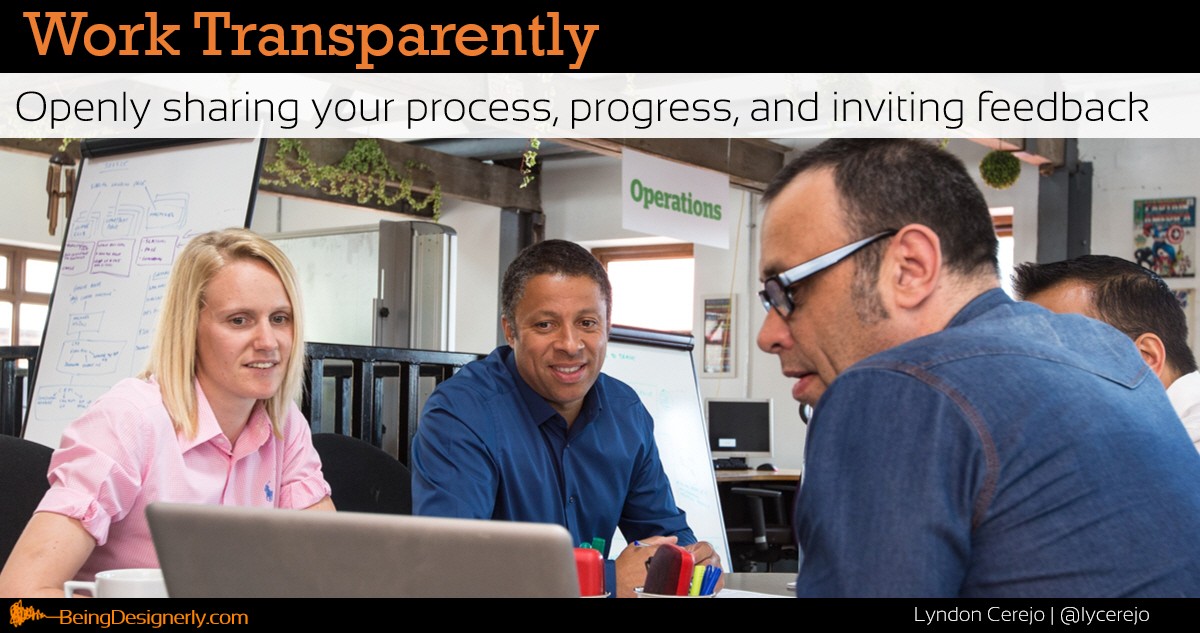
Being Designerly: Work Transparently
In this series about Being Designerly, we explore ways to be more creative by thinking, feeling, and acting like a designer. In previous articles, we discussed designerly behaviors and skills such as Putting People First, Being Curious, Being Observant, Thinking Critically, Having Empathy and Advocating for Users; this one is about working transparently.
Work Transparently: openly sharing your process, progress, and inviting feedback.
Gone are the days of the lone designer working in isolation, getting a flash of inspiration, and conducting a grand reveal of their design. While designers may work alone at times, collaborating and receiving input from others is crucial to the design process.
Working transparently is a designerly behavior that ensures understanding and alignment with team members, users, and stakeholders. Transparent design practices lead to better collaboration, increased trust, and improved project outcomes.
Despite those benefits, people may avoid working transparently due to perfectionism, fear of judgment, or lack of trust in their team.
Here are a few ways to work transparently:
Use collaborative tools – most design and prototyping tools today have built in cloud-based real time collaboration. Those features allow a designer to collaborate, get immediate feedback, and quickly validate their work. Beyond design tools, modern software allows people to collaborate on documents, spreadsheets and presentations.
Showcasing work in design critiques is a good way to build in peer reviews and hear viewpoints a designer may not have considered individually.
Schedule regular design review meetings with other teams to share progress and get feedback. Set expectations at the start of the meeting about the current state of work and the type of input or feedback you are looking for. This helps get feedback early and often through the design process, improves the result, and avoids surprising others at the end.
Share your plan—this helps you be transparent about what you plan to do, the timeline to completion, when people can expect to be involved, and when it will be completed. For a longer plan, share periodic status updates. This not only promotes transparency, but also creates accountability. Seems basic enough, but not always done.
If you’re not used to working in this manner, it may feel uncomfortable the first couple of times. A supportive team can help reduce discomfort. Working transparently as a designer fosters trust, collaboration, and effective user-centered designs. It’s a behavior that benefits designers, the team, and the end result.
Working Transparently wraps up the designerly skills related to the heart (feeling). In the next post, we will focus on communicating visually - one of the designerly skills related to the hands (doing). You should also sign up for curated content on the topic every other week at news.beingdesignerly.com. I hope these will help you, designer or not, be more creative and innovative by being designerly!